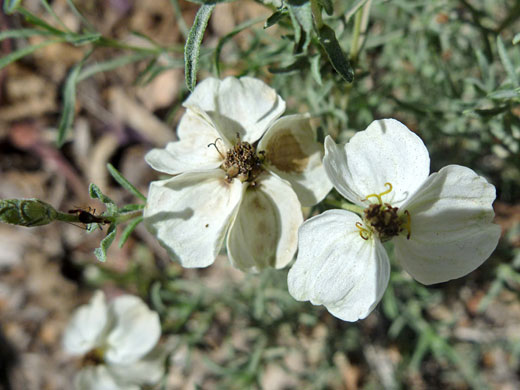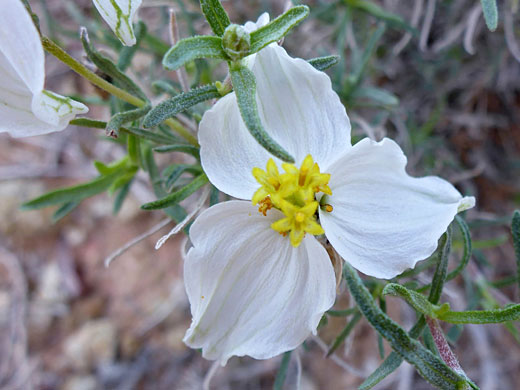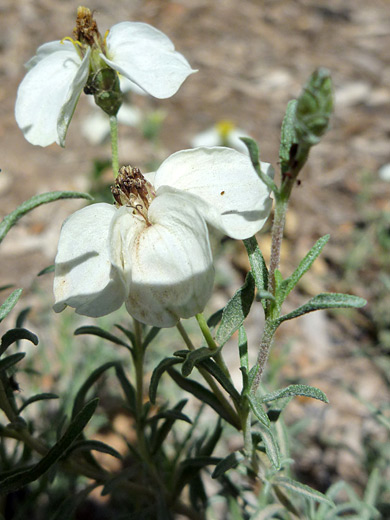Common names:
Desert zinnia, white zinnia
Family:
Scientific name:
Zinnia acerosa
Main flower color:
Range:
South Arizona, south New Mexico and south Texas
Height:
Between 4 and 12 inches
Habitat:
Rocky, open locations; 2,200 to 6,000 feet
Leaves:
Linear, opposite, around half an inch long
Season:
April to October
Zinnia acerosa is not always easily recognizable as an asteraceae species, especially when its flowers are partly withered, but they have the familiar composite structure, with 4 to 7 white (occasionally pale yellow) ray florets around a center of 8 to 13 yellow disc florets, brown when mature, and elongated, projecting above the rays. The ray florets have three notches at the tip, and are about a quarter of an inch long. Phyllaries are wide - oblong to nearly rounded, blunt at the tip.
Plants form rounded, shrub-like clumps, and inhabit generally dry, semi-desert areas, from south central Arizona to west Texas. Stems are greyish green in color, and they branch readily. Leaves and stems have a covering of short, rough hairs.
Plants form rounded, shrub-like clumps, and inhabit generally dry, semi-desert areas, from south central Arizona to west Texas. Stems are greyish green in color, and they branch readily. Leaves and stems have a covering of short, rough hairs.
All Contents © Copyright The American Southwest | Comments and Questions | Contribute | Site Map






